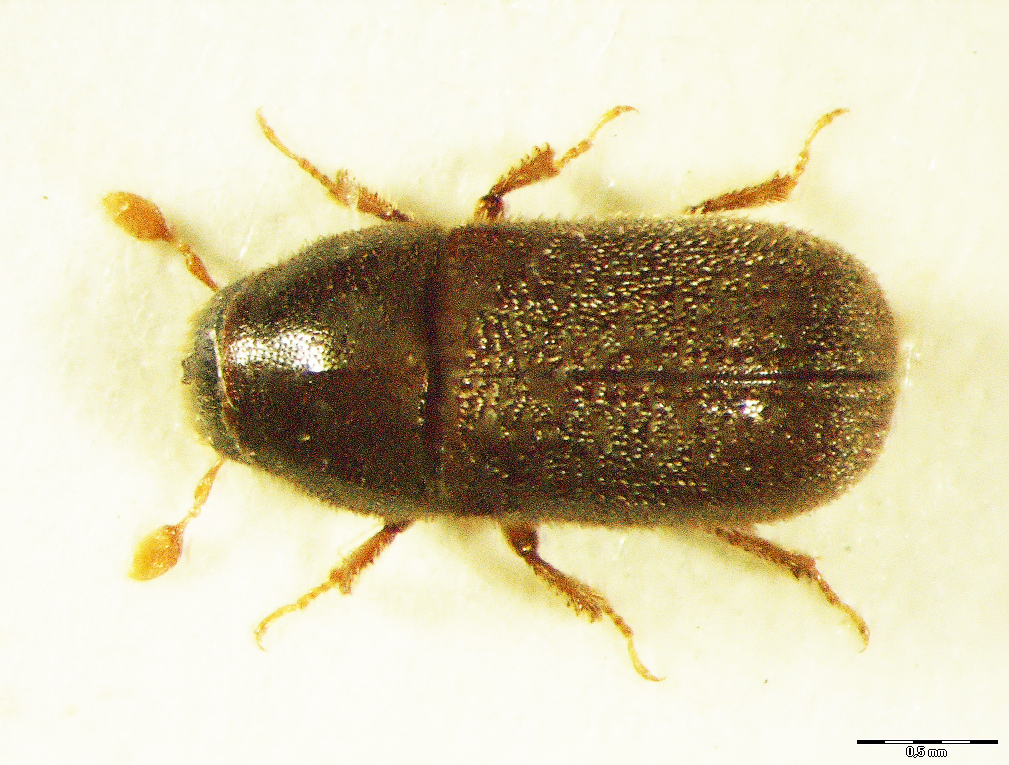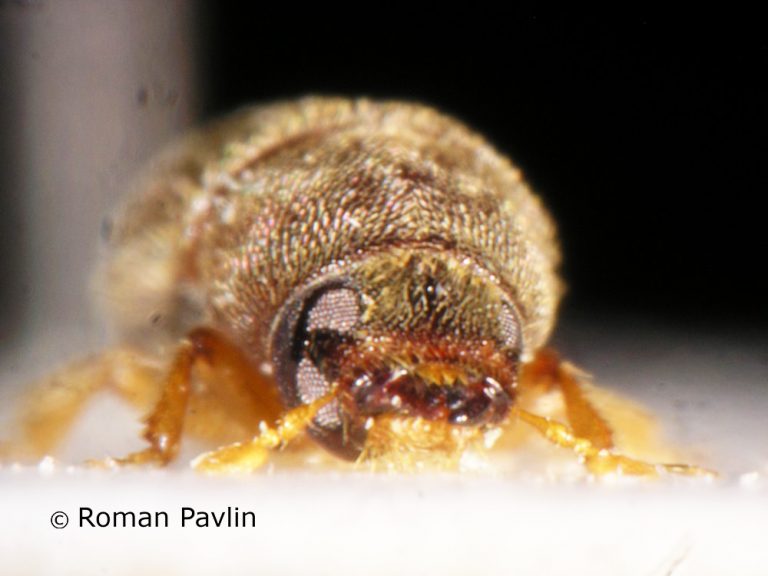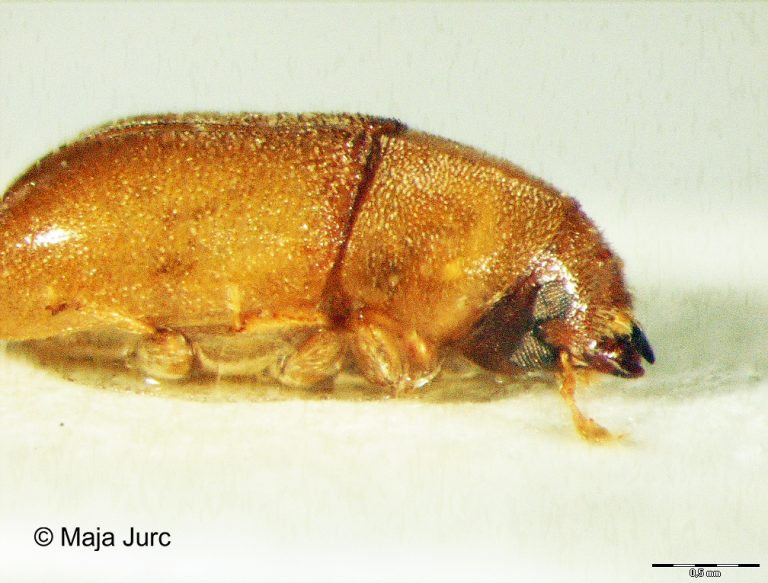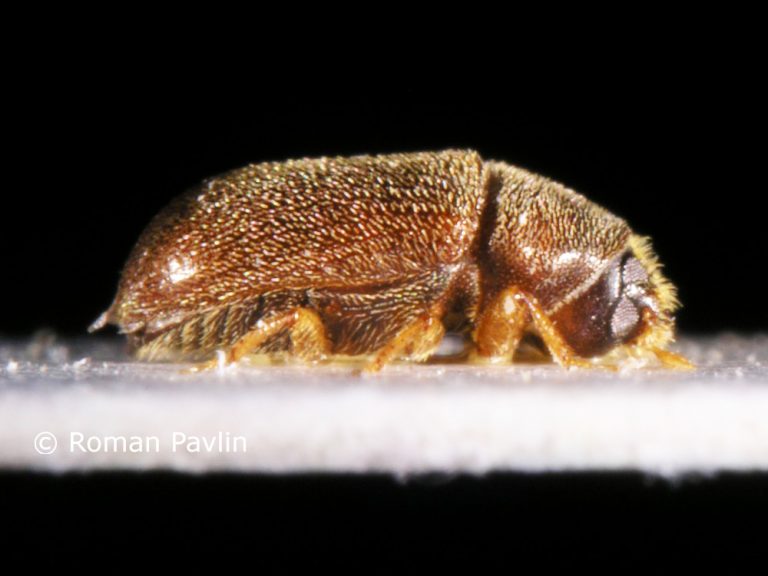16.01. Polygraphus poligraphus (Linnaeus, 1758)
Presence
E: AU BE BH BU BY CR CT CZ DE EN FI FR GB GE GR HU IT LA LS LT LU MD NR NT PL RO SL* SK ST SV SZ UK YU
A: ES FE GAN JA KZ MG NMO QIN SCH SHA SHX TR WS XIZ YUN
AFR
Figure 65: Polygraphus poligraphus, dorsal, lateral (Photo: Maja Jurc)
Older catalogs and keys – citations of name
Siegel 1866: Polygraphus pubescens Er.; Grüne 1979: Polygraphus poligraphus Linné, 1758; Freude, Harde, Lohse 1981: Polygraphus poligraphus Linné; Titovšek 1988: Polygraphus poligraphus (Linné); Pfeffer & Knížek 1993: Polygraphus poligraphus (Linnaeus, 1758); Pfeffer 1995: Polygraphus poligraphus (Linné, 1758).
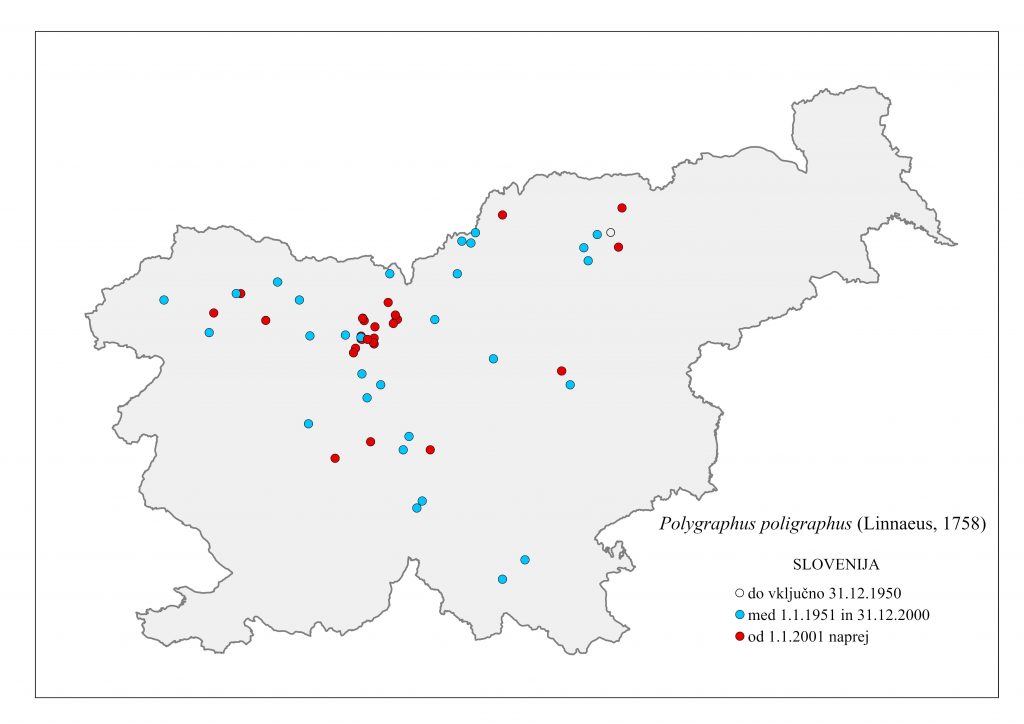
Figure 66: Polygraphus poligraphus, distribution map according to historical and recent data
Ecology and presence in Slovenia
The species occurs with two generations per year in central Europe and only one generation per year in northern Europe. It is also present in Asia and the Afrotropical region. Siegel (1866) states that the species was “rare in Carniola…”, but this is questionable in given the many subsequent records. The species is now distributed throughout Slovenia, with the exception of the NE and SW (Figure 66). Hosts include Picea abies and P. obovata, less frequently Pinus sylvestris, P. strobus, P. cembra, Pinus spp., Abies alba and Larix sibirica). In Slovenia, the species has been found on P. abies, P. sitkaensis and A. alba. Polygamum, swarms in the second half of April to May and from July to August. The phloemophagous species hollows out a star-shaped tunnel system, 3-8 maternal galleries 3-6 cm long arise from the extensive brood chamber, the tunnels are mostly located in the bark. After regeneration feeding of old beetles along the maternal gallery and maturity feeding of young beetles along the pupation chamber, only traces of the image of the original tunnel system remain. Adult length is 1.8-3.0 mm. The beetles have (seemingly) two-part eyes. The elytra are covered with elongated scales (Figure 65). The antenna scape is single-segmented. Apart from Ips typographus and Pityogenes chalcographus, P. polygraphus is the third most economically harmful bark beetle on spruce. Pheromone: Terpinen-4-ol (Leuze 1977).

